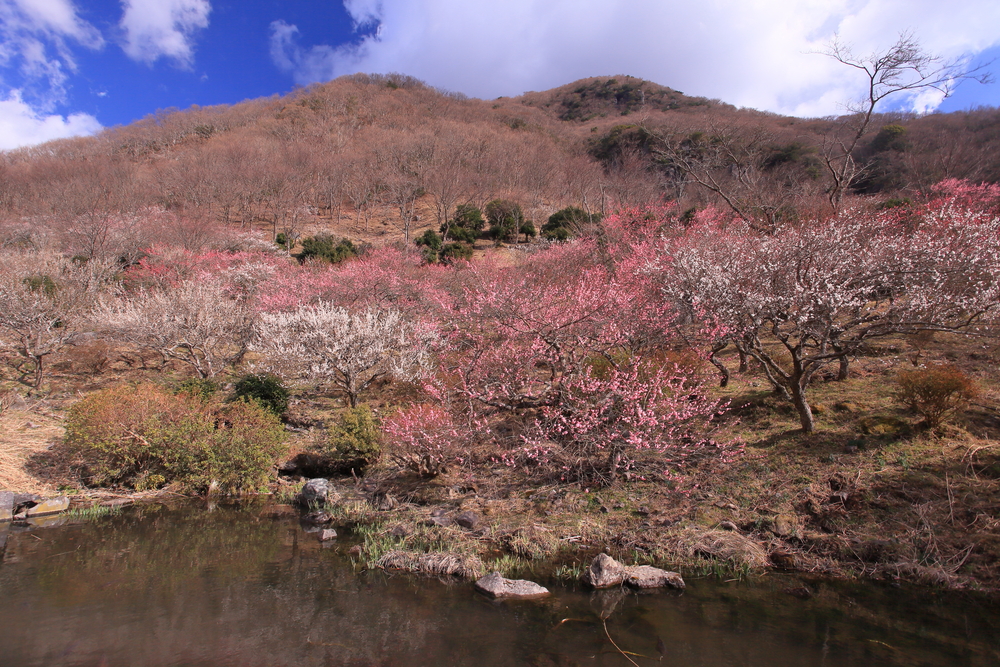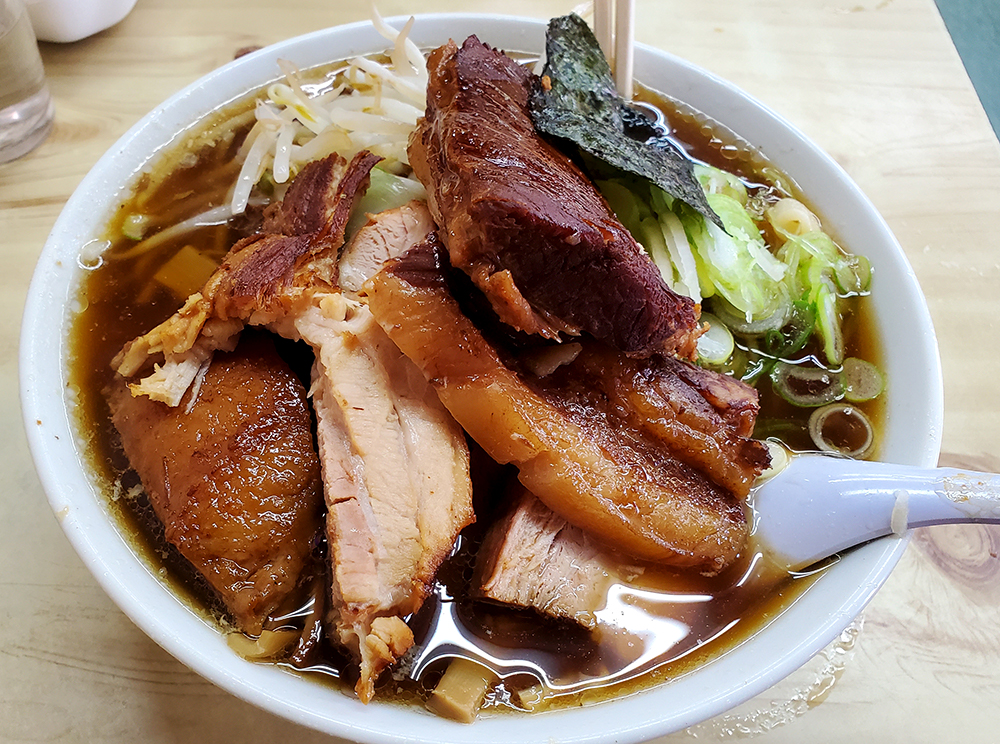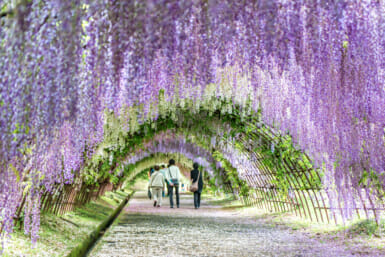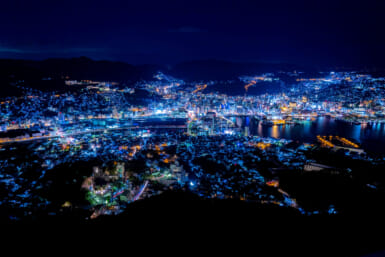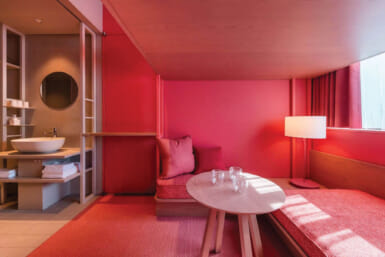The city of Yugawara, Kanagawa Prefecture, is something of a middle child of south-central Japan, often overshadowed by Odawara to the north with its famous Odawara Castle, or by Atami to the south. In reality, though, over the years Yugawara has grown into a beautiful, hidden jewel of Sagami Bay with unique charms that you simply won’t find anywhere else. Today, Japanese people may know Yugawara as a hot spring resort town (which is apt given that the “yu” in its name stands for “hot water”) but there is so much more to the city. And you can discover it all in just 48 hours:
DAY 1
9:00 AM – Yugawara Station
You can reach Yugawara from Tokyo in about an hour by taking the shinkansen to Atami and then changing to the Tokaido line. A longer, more budget option is to take the Tokaido line all the way, changing in either Odawara or Hiratsuka, etc. After arriving, get in the proper Yugawara mood by soaking your hands in the relaxing hand spa in front of the station.
The city is famous for its traditional yet affordable ryokan inns and hotels, many of which offer shuttle services from the station, so you can either go check in early or leave your bags at the local baggage storage and start your exploration of Yugawara.
10:00 AM – Manyo Park
Take the bus for Oku-Yugawara or Fudotaki and get off at Ochiaibashi and you’ll arrive at one of “The 100 Best Historical Parks in Japan.” Fans of history will appreciate the park’s monument inscribed with the only poem about a hot spring found in the Man’yoshu, an 8th-century collection of Japanese waka poetry, which happens to be about the Yugawara Onsen. At the end of the park, there’s also the Doppo-no-Yu footbath facility with nine types of onsen waters said to cure all sorts of ailments (adults: ¥300, children: ¥200). And on your way out, don’t forget to drop by the park’s historic Kumano Shrine.
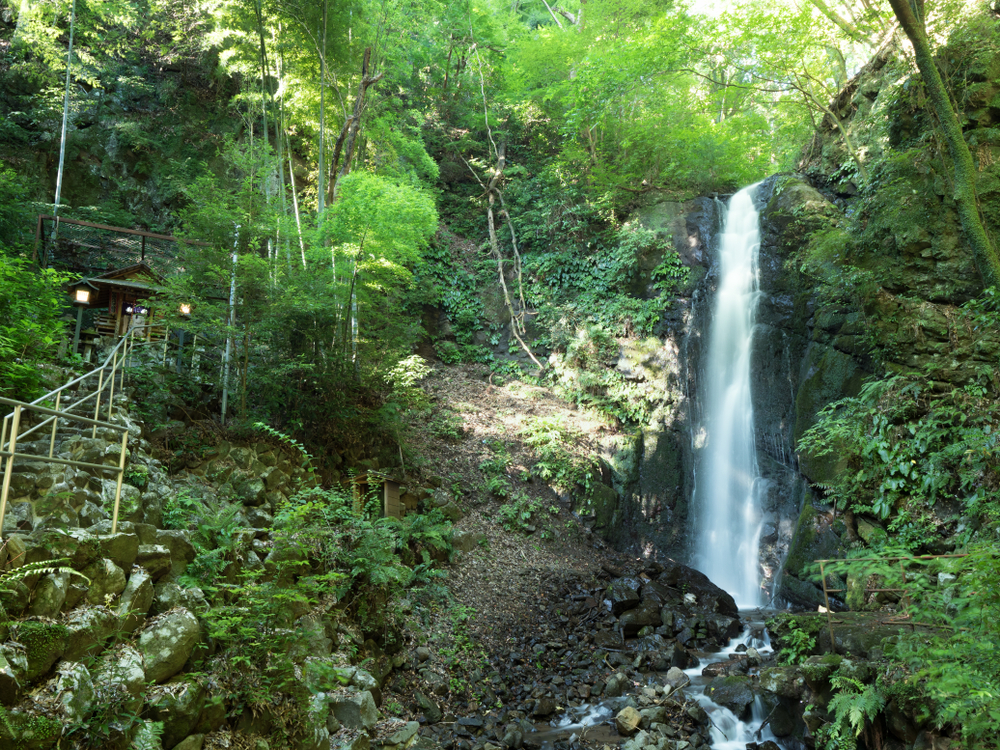
yoshi0511 / Shutterstock.com
2:00 PM – Fudo and Godan Waterfalls
After grabbing a quick lunch or snack, get on a bus going towards Oku-Yugawara and get off at Fudotaki to arrive at the Fudo and Godan waterfalls. Found close together, the two falls couldn’t be more different. Fudo is only 15m-high but it’s been praised for its massive volume of water. Godan, on the other hand, is over 100m in height and seems to be falling down a five-step staircase, hence its name (“godan” means “five steps”). The vapors at the bottom of the Godan Waterfall also tend to make the entire area look like an onsen hot spring.
4:00 PM – Tivoli Sweets Factory
Take a bus going towards Yugawara Station, get off there and then take a short walk to the Tivoli Sweets Factory, the only direct sales facility for the famous cookie manufacturer. Besides an assortment of sweets and chocolates, the factory also offers a look at its production process on the second floor. After stocking up on souvenirs and snacks, enjoy a local specialty dish like wantan-men (wonton noodles) in one of the many restaurants around Yugawara Station. Once that’s done, head back to your ryokan or hotel for a long hot spring bath, making sure to rest up for tomorrow.
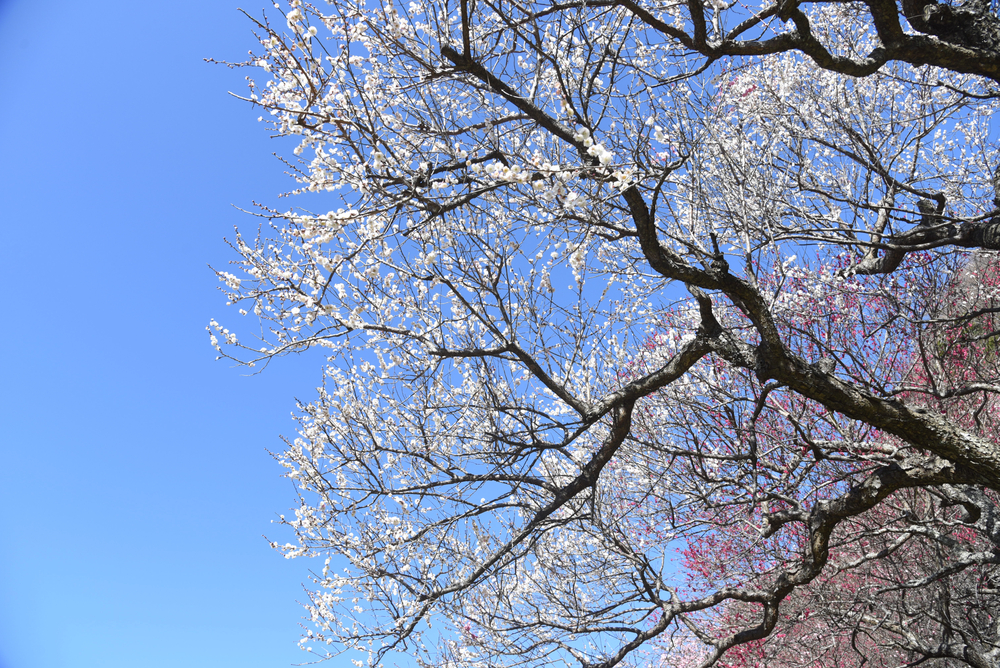
tamu1500 / Shutterstock.com
DAY 2
10:30 AM – Makuyama Park (Ume Grove)
From early February to mid-March, the 40,000 ume (plum) trees at Makuyama Park turn it into a fantastical landscape of white and red that attracts thousands of visitors each year. To get there, simply take a bus going towards Makuyama Koen and get off at the terminal. Entry to the park during plum season costs ¥200 but in return you’ll get the chance to walk through a fragrant sea of color, enjoying relaxing hiking trails and forest streams.
12:30 PM – Yugawara Art Museum
Yugawara isn’t just hot springs and ancient history. In the 20th century, it became one of Japan’s cultural centers, the legacy of which is the Yugawara Art Museum, showcasing the works of artists with some connection to the city. Besides beautiful landscapes, the museum also exhibits the works of Shinsui Ito, a painter who specialized in bijinga(portraits of beautiful women) or the contemporary master Reiji Hiramatsu.
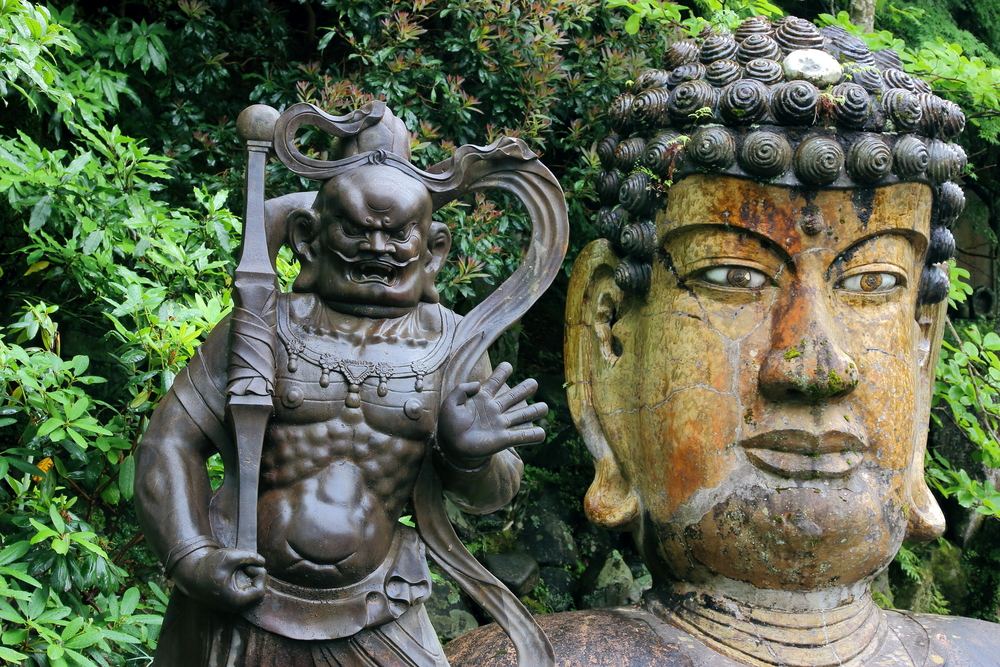
cdrw / Shutterstock.com
1:30 PM – The Great Buddha Head (Fukusenji Temple)
Get on a bus going towards Fudotaki, then get off at Izumi Iriguchi. This will bring you face to face with the ceramic face of the Buddha at the Fukusenji temple. This… unique statue was originally housed at Nagoya Castle whose lord, Mitsutomo Tokugawa, commissioned it to mourn his dead mother. The statue was supposedly built whole but today only the head remains. While it is the most famous part of the temple, Fukusenji itself should not be overlooked as it is a beautiful, historic place with more statues and examples of traditional architecture found all throughout its grounds.
2:30 PM – Yugawara Station
And with this, the tour of the city is complete. Be sure to grab some local souvenirs like kibimochi (a dessert made from millet and rice flour, coated with soybean flour) or a Yugawara dried fish, take one last dip in the hand spa, and then say goodbye to Kanagawa’s onsen paradise.
Feature photo: wassei / Shutterstock.com

